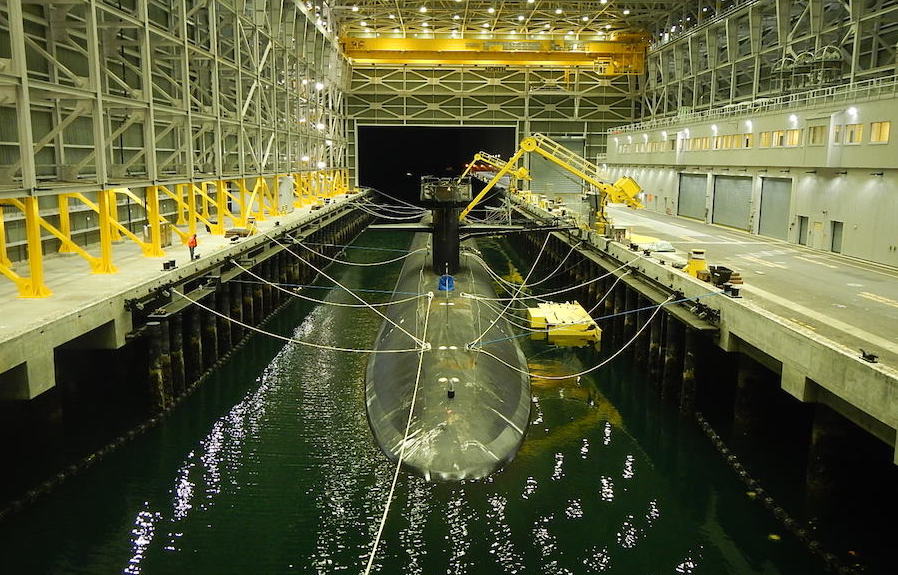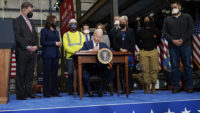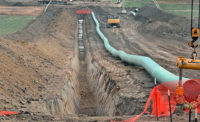As the Biden Administration prepares to take office in January, construction unions, employers and industry groups are eyeing the potential for a resurgence—and possible expansion—of project labor agreements on federal projects.
Throughout the campaign, then-candidate Joe Biden touted his long-standing support of union issues. In a September letter to the Laborers union, he vowed that his administration would “prioritize project labor and community workforce agreements.”
In recent decades, use of the project labor agreement (PLA) on federal projects has tracked with Democratic administrations favoring them and Republican administrations discouraging or actively opposing them. President Barack Obama signed an executive order in 2009 that encouraged executive agencies to consider requiring a PLA on projects of $25 million or more. The order revoked one signed under the Bush administration that barred government-mandated PLAs on federal projects.
President Donald Trump did not rescind the Obama order, but there is no record of a PLA used on a large project during his presidency, says the Associated Builders and Contractors. ABC identified just 12 projects that were 100% federally funded that used one during Obama’s eight years.
Looking at the Issues
Mike Bellaman, CEO of ABC, says he expects the new administration to expand PLA requirements. The president-elect “seems to be in the camp of mandating PLA,” he says. “For us, that would fly in the face of fair and open competition.” Bellaman says ABC opposes mandated PLA use that could exclude nonunion bidders on work. Construction union members represent about 13% of the industry workforce, says the U.S. Labor Dept.
Building trades officials say Obama-era projects include PLA successes.
The U.S. Navy used one in 2012 for an explosives-handling wharf project at the U.S. Navy's Naval Base Kitsap-Bangor near Seattle. The project, initially estimated at $715 million, was finished in 2016 at a final cost of $448 million, union officials say. They pushed for a PLA on the complex and time-sensitive project to insure greater certainty of delivery and “no disruptions in labor,” says Monty Anderson, executive secretary of Seattle’s building trades council.
Anderson says the project was significant in an area hit hard by the loss of paper and timber industry jobs. “Unions did lots of outreach to local residents to get them into pre-apprenticeship training prior to the job,” he says. “It was a big job and we were able to ramp up for it.”
The Associated General Contractors of America, Washington state chapter, had protested use of the agreement to the Naval Facilities Engineering Command.
Mike Kennedy, general counsel of the Associated General Contractors of America, says that while there are areas where some PLAs are warranted, most agencies “have agreed that requiring a PLA is unlikely to lower the cost or expedite the construction of a project.” AGC, which called for the Trump Administration to rescind the Obama executive order, now is analyzing data from that administration on PLA use by executive agencies. Kennedy says initial findings in the still-ongoing study show that after procurement officials survey market conditions, they rarely choose it.
AGC, with both union and nonunion members, opposes use mandates from owners, including the government, says Kennedy. “Owners should stay out of” construction collective bargaining and “avoid discriminating against companies that do not regularly work” under labor pacts, he says. “This is an industry matter.”
PLAs can also be applied to projects that use federal dollars, a practice not allowed under the Bush-era order. Ben Brubeck, an ABC vice president, says the Federal Highway Administration approved about 450 PLA projects between May 2010 and January 2020, accounting for about $11.6 billion in total contract value. ABC sees potential for more PLAs on projects with federal dollars, including those in the next infrastructure stimulus bill, says Bellaman.





Post a comment to this article
Report Abusive Comment